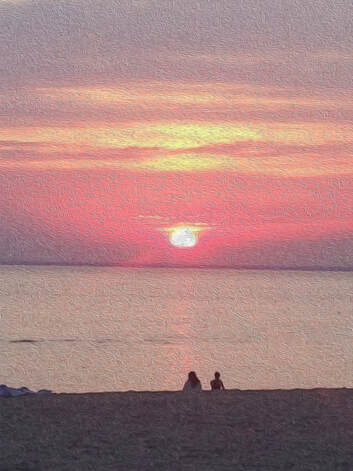Where Is Poetry Hiding in Your Art? This article is the personal review after reading the book, Awakening the heart by Georgia Heard.
Reading Chapter 3 of Georgia Heard's "Awakening the Heart," you'll find that art and poetry are intrinsically alike, like twins. For example, among her phrases, "Poetry is the genre of the inner life" is what I feel every time I draw and make art. Painting is very similar to life. It was born on white paper, and I sketched myriad dreams and hopes on it. But the moment I paint, I know. Sometimes I couldn't sketch to fit my purpose. So, they continued to paint over it with color—however, the more layered, the more prominent the parts that did not go as previously intended. Oh, my God, if I keep drawing with patience, I'll get a picture somehow. And I learn one thing. Even the part I felt was a mistake became a mark that made the painting deeper if I looked at the overall view. So every time I paint, I learn and know life. And I can no longer be upset about my mistakes and let them go with patience. Try something like this. Georgia Hart's words, "Without that interior life, we are shells, we are nothing," resonate deeply with me. This is similar to my favorite bible verse. "If I speak in the tongues of men and of angels, but have not love, I am only a resounding gong or a clanging cymbal." By excerpt The Love, 1Cor.13) As an artist, I continue to paint, naturally researching trends and reacting sensitively. I recently learned that AI art had made remarkable progress in the past two years. For example, go to the "mid-journey "of Discord, a representative artificial intelligence art generator site. Anyone can produce as many images as they want with a few keywords. When I saw the result of putting in my favorite poem, I could create pictures that perfectly matched the mood and sensibility of the poem in just a few seconds. Can artists survive in this reality? Of course, cases like this have happened in the past as well. It was in the 19th century that when the camera was invented, painters feared they would lose their jobs. However, thanks to that, Impressionism, which captures human emotions and feelings and expresses them in landscapes, emerged, and this helped the development of art history. However, in the case of this AI painter, I think most artists must have felt panic. So did I. Unlike photography, AI Artists understand human language emotions and draw pictures that express them. People who thought expressing feelings was the realm of humans were astonished that artificial intelligence can also understand and express human emotions. So, how should we live as an artist in this chaotic era? I haven't slept well for a few days with worries. Amidst these concerns, her writings give me great comfort and enlightenment. Because I've got a realization that's causing a reversal. That's why I even quoted Bible verses. AI painters don't have their own unique stories. They can't talk about experiences because they don't live life. They have no history and no story. They don't have stories of crying and laughing for countless hours. They are just imitating and plausibly pretending to be such humans. They can't love. They don't know what love is. Therefore, instead, I learned the essence of my work through the essence of poetry, and I also knew that the direction I was going was never wrong. For now, people will admire machine-made paintings, but in time they will naturally discover that they are not alive and that there is no interior life. Artificial intelligence remembers, whether through data mining or neural networks, differs from what humans remember and experience. I feel that modern society sometimes feels like an era in which a logical, emotionless world threatens human emotions and feelings. That's when you find out that writing poetry is actually helpful. An interesting example is that even on the AI art generator I mentioned earlier, poetry produces more affluent, realistic, imaginary pictures than simple texts. It is an example of how great it is for humans to make up poetry. Through her writing in Chapter 3, "A memory in the form of an image often triggers poems for me," I discovered the commonalities between painting and poetry. When I work, memories, experiences, and stories from the past act as triggers to create a single image. Perhaps this memory makes a poetic phrase, touches and resonates with the heart, and I think this reverberation creates a picture in my head. Therefore, applying it to my painting work, I would not be able to create such an image without poetry. Also, in her article, "We can write a poem about the world in its entirely, not just the pretty parts: therefore, the third poetry door is the door of our concerns," makes the lens through which we see the world even more special. When I draw, I don't only draw beautiful things. Although I know it does not sell, I know well that I must draw it if I have a strong desire. In other words, poetry creates the resonance of the heart, and the resonance creates images. In my work, poetry and drawings are inextricable.
0 Comments
Leave a Reply. |
Myungja Anna KohArtist Categories
All
Archives
July 2024
|
Proudly powered by Weebly


 RSS Feed
RSS Feed